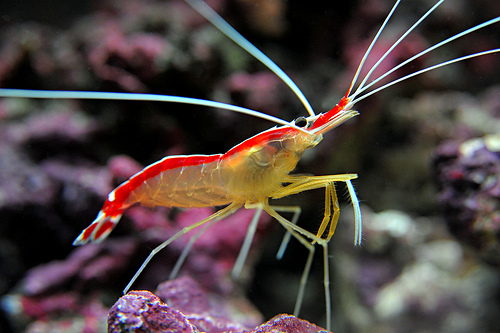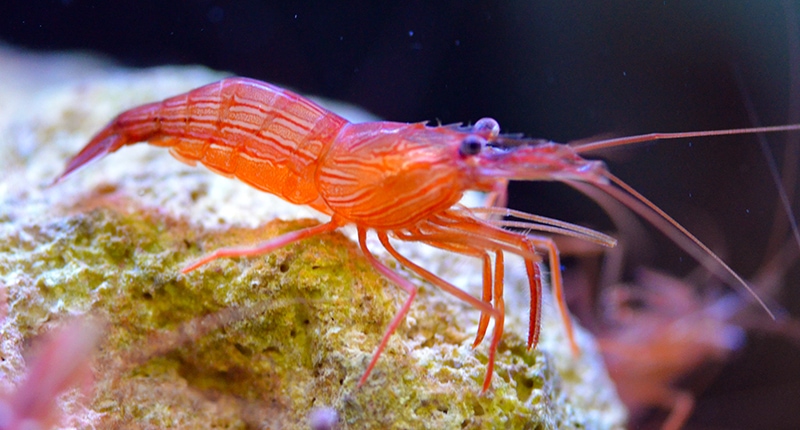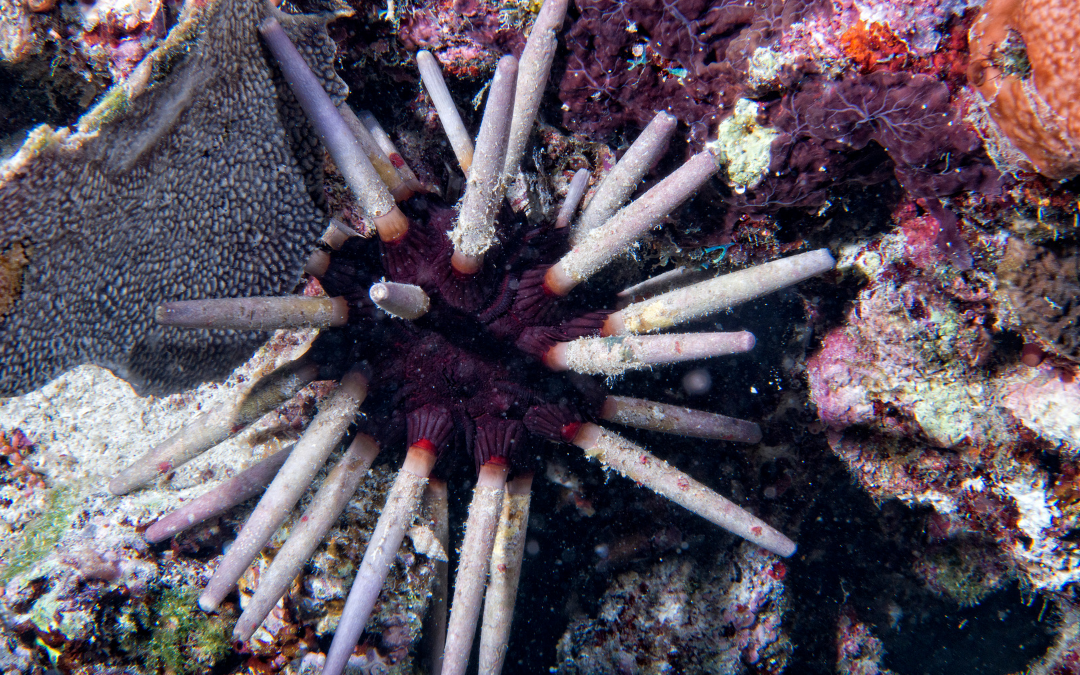Invert Touch Tank
Cleaner Shrimp

Diet: Omnivore including algae, detritus and dead fish tissue
Length: 2 inches
Life Span: 3 years
Cleaner shrimp have a mutually beneficial association with fish. The fish benefit of having parasites removed from them and the shrimp gain the nutritional value of the parasites. Shrimp will also clean around wounds of fish from parasites and mucus which decreases infections and stress, and helps healing. Shrimp will congregate in cleaning stations.
Peppermint Shrimp

Range: Atlantic Seaboard, Gulf of Mexico and the Caribbean
Diet: Omnivore including algae, detritus and dead fish tissue
Length: 2 inches
Life Span: 2 years
Peppermint Shrimp are part of a cleanup crew. They like to hide in crevices of rocks but will scavenge in the open areas for leftover food. They control the population of an anemone called aptasia by eating them.
Chocolate Chip Sea Stars

Range: Indo-Pacific Region
Diet: Omnivore including algae, hard corals, sponges, and snails
Length: Up to 16 inches
Life Span: 20 years
Chocolate Chip Sea Stars are also known as the Horned Sea Star because of the row of spines on its back. They are used to scare away predator by looking frightening and dangerous. This is the reason why tiny shrimps, brittle stars and even juvenile file fish can be found on the surfaces of these sea stars.
They are able to regenerate lost limbs as long as the central disk in the body is intact. There have been individuals with four or six arms instead of the usual five.
Pencil Sea Urchin

Range: Indo-Pacific Region
Diet: Herbivore including coralline algae
Length: 3 inches in diameter and up to 4 inch spikes
Life Span: 30 years
The Pencil Sea Urchin has thick round spines that allow it to bore into hard substrates to defend itself, wave drag, and pressure. Its spines are made of magnesium calcite that is arranged so that there is a porous network to allow fluids and other organic matter to pass within them. The closer the spine is to the body, the less porous it is.